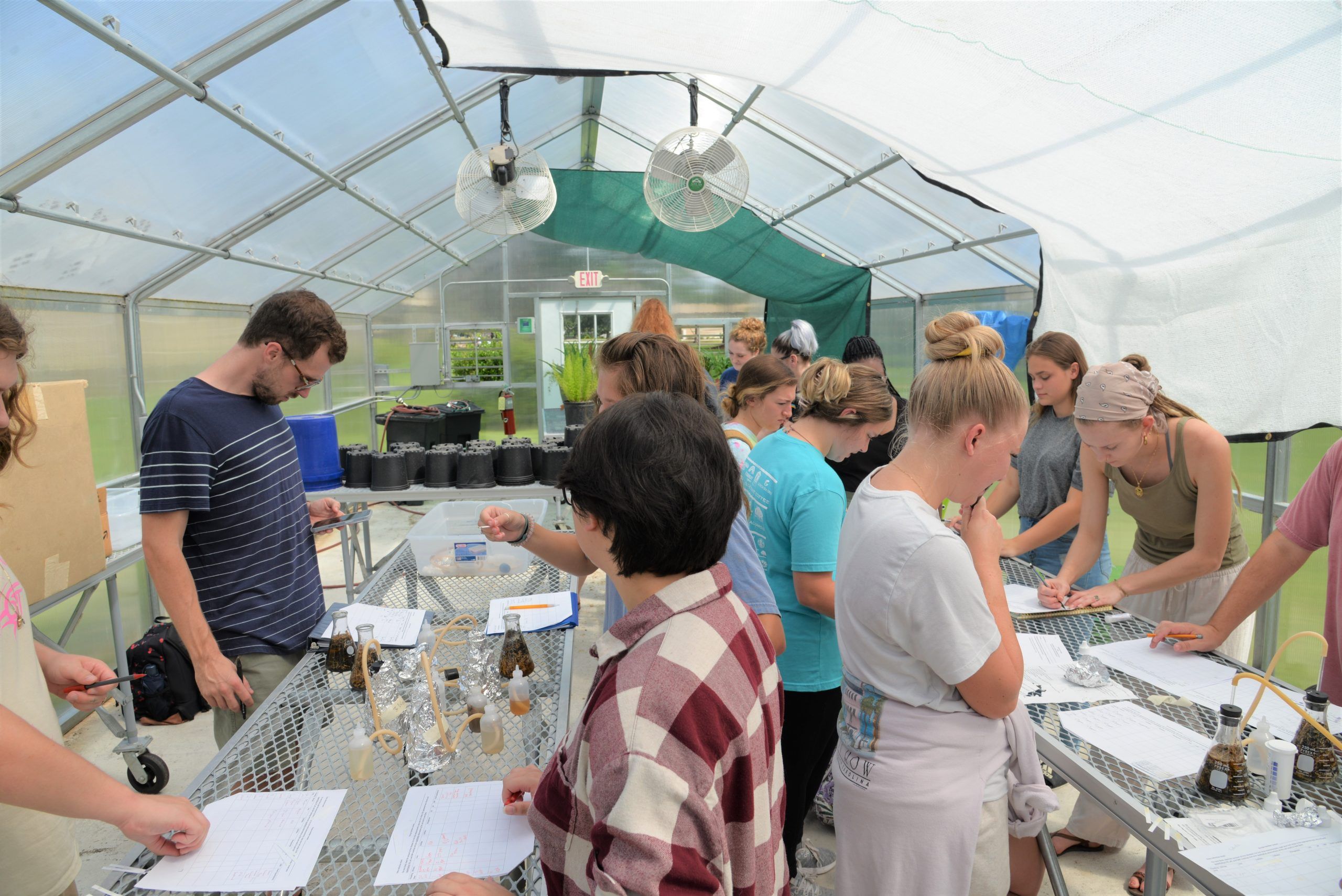
Small Ecosystems Lead to Big Learning
Students in Dr. Emily Tarsa’s ENVS 4100 course have created miniature versions of one of the most biologically diverse ecosystems—wetlands. Approximately 13 percent of Georgia’s land area is covered with wetlands, making Georgia one of the leading states in total wetland acreage, which includes salt marshes, bogs, and swamps. This course gives students a hands-on look at the processes that occur in flooded soils.
Tarsa, an assistant professor of environmental science, started the semester with teaching what wetlands are all about, then had students build wetland microcosms (small-scale versions) in flasks. The microcosms were periodically flooded and stored in the greenhouse, located next to the Southeast Georgia Conference Center. In wetlands, the ground is constantly or periodically flooded. Due to the lack of oxygen, microbes in the soil use other nutrients for metabolic activities such as nitrogen, iron, manganese and sulfates. The use of these other nutrients occurs in a certain reduction-oxidation process, also known as redox. The longer an area is flooded, the more biogeochemical reactions take place, Tarsa said. The benefits of wetlands include water purification and flood prevention.
As part of the course lab, students are measuring dissolved oxygen, nitrate, and other concentrations in their wetland soils, and are also collecting qualitative data on changes in color and odor—like swampy, rotten egg smells.

“Understanding redox reactions and the microbial processes that happen in wetland soils can be a hard concept to grasp, but incorporating multiple senses into the learning process is key to experiential learning,” Tarsa said. “Smell is especially tied to memory and can be very effective in reinforcing difficult concepts.”
Senior Kate Nottingham described the course as “fun” because it’s hands-on. Nottingham is majoring in both biology and environmental science, with aspirations of a career in animal conservation. She hopes to work at a place like Disney’s Animal Kingdom in the future.

For Jonathan Warehime, a junior, the course has made him more aware of his everyday environments. Warehime shared that even when he goes on runs, he’s noticing different soil types.
“This course is a really good way to tie the area into the class, and figure out what is around us,” he said.
The course fits right into what he likes to do, as he also enjoys doing research and being in the field. He plans to attend graduate school and pursue a career in planetary science related to geochemistry.
The goal of the lab is to take students out of the classroom, Tarsa said, and engage them in a hands-on activity that will help them better understand complicated processes.

“Experiential learning is a top priority for the Environmental Sciences program at Coastal Georgia,” Tarsa said. “Our goal is to enrich students’ learning experience through opportunities to investigate, synthesize, and apply their knowledge of the world through classroom, lab, and field experiences.”